Business Letter Template Format Explained
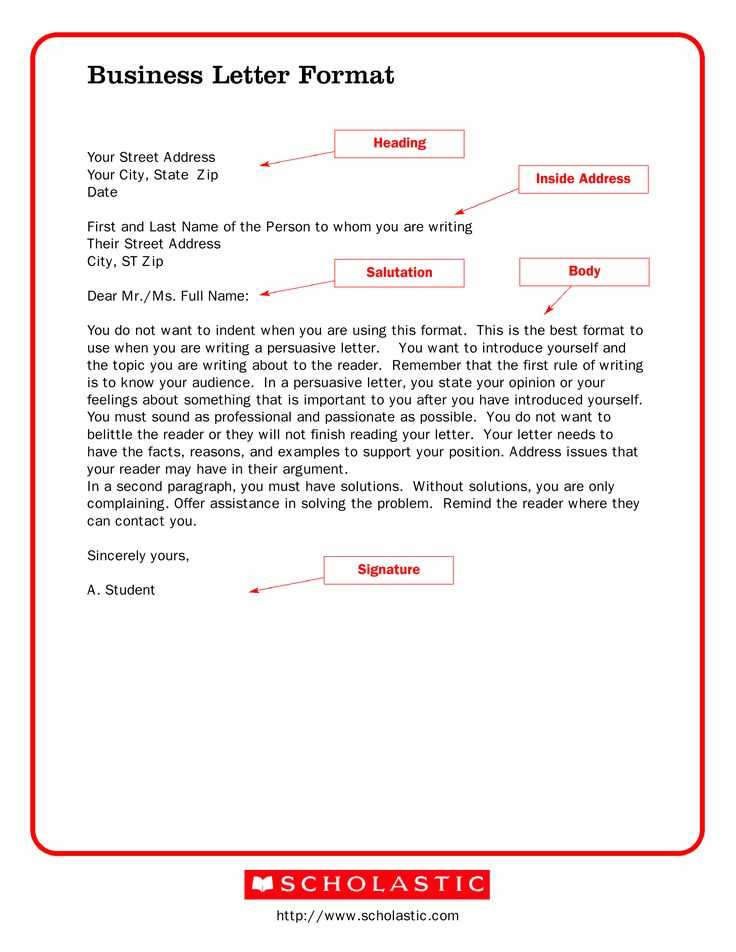
When creating formal correspondence, the arrangement of text plays a crucial role in ensuring clarity and impact. A well-organized structure helps the reader to easily follow the main points while maintaining a polished and professional tone throughout. The right setup can enhance your message, leaving a lasting positive impression.
Understanding the key sections involved in such communication is essential for achieving the desired outcome. From the initial address to the final sign-off, each element contributes to how your message is received and interpreted. By focusing on the right flow and organization, you ensure that your communication remains effective and appropriate.
Essential Components of a Business Letter
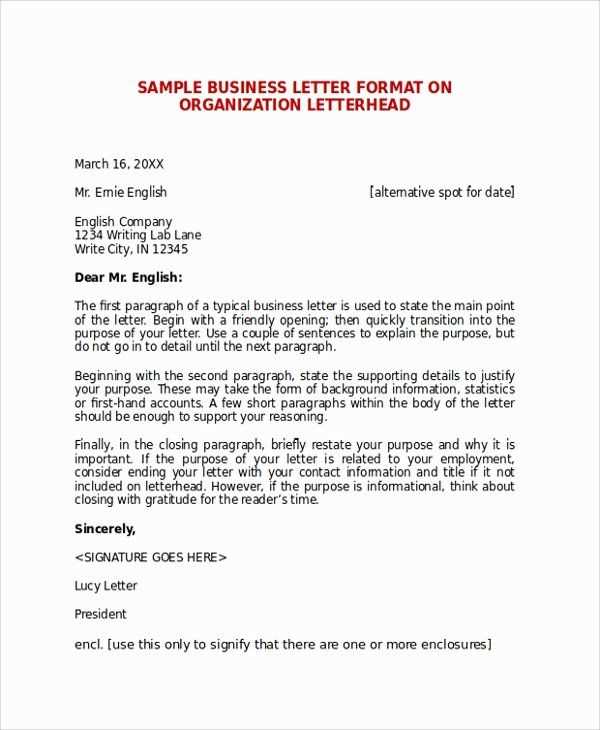
To create clear and effective communication, certain elements must be included to ensure that your message is professional and easy to understand. These core components provide structure and convey the necessary information in an organized manner.
- Heading: This section usually includes the sender’s contact details, the date, and the recipient’s information, providing a clear reference for both parties.
- Salutation: A formal greeting, addressing the recipient by name or title, establishes the tone of the communication.
- Introduction: A concise opening statement that presents the purpose of the correspondence sets the stage for the body of the text.
- Body: This is where the main content is delivered, presenting the message in clear, organized paragraphs to ensure easy comprehension.
- Closing: A professional sign-off, often with phrases like “Sincerely” or “Best regards,” marks the end of the communication.
- Signature: The sender’s signature validates the message, adding a personal touch and authenticity to the correspondence.
Each of these components serves a distinct role, ensuring that the message is both professional and effective in conveying the intended information.
Choosing the Appropriate Layout Design
The arrangement of text and sections in formal communication plays a significant role in its readability and overall effectiveness. A well-structured design not only makes the document more visually appealing but also ensures that the reader can easily navigate through the content. Different layout styles can convey varying levels of formality and professionalism, so it’s important to choose the one that best fits the context and purpose of the message.
Common Layout Styles
There are several common design styles used in formal documents. Each style has specific characteristics that make it suitable for different types of correspondence.
| Style | Description |
|---|---|
| Block | All text is aligned to the left, with no indentation, and the paragraphs are separated by a space. |
| Modified Block | Similar to the block style, but the date, closing, and signature are aligned to the center or right. |
| Semi-Block | Paragraphs are indented, while the rest follows the same structure as the block style. |
Considerations for Choosing the Right Layout
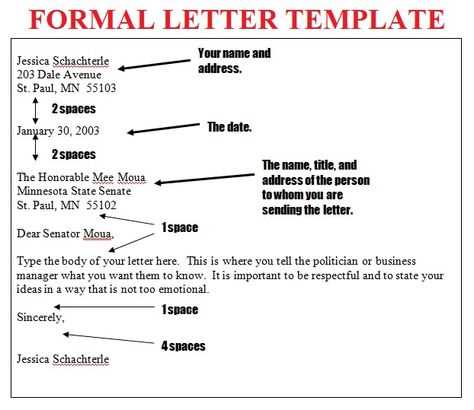
When deciding on a layout, consider factors such as the formality of the correspondence, the recipient, and the purpose of your message. A clear, professional layout not only reflects well on the sender but also ensures the message is understood as intended.
Properly Addressing the Recipient
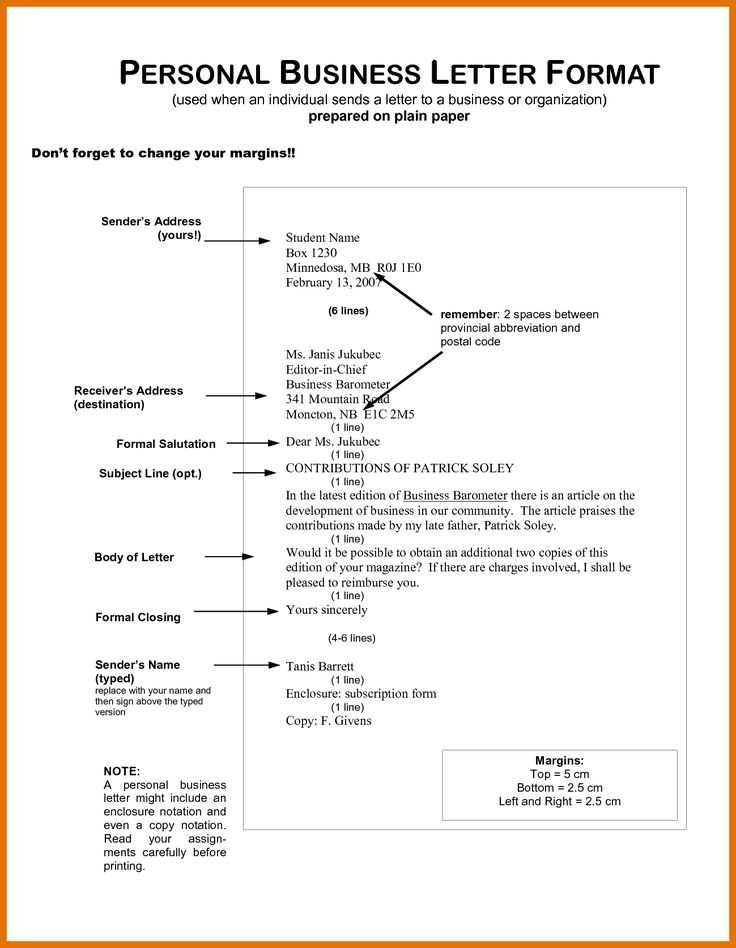
Accurately addressing the recipient is a crucial step in any formal communication. It sets the tone of the correspondence and shows respect for the individual or organization. The manner in which you address the person reflects your professionalism and attention to detail, which can influence how your message is received.
When addressing someone, always use their correct title and ensure their name is spelled properly. For formal contexts, using titles such as “Mr.,” “Ms.,” or professional titles like “Dr.” or “Prof.” is important. In the case of a company or institution, ensure you direct your communication to the right department or individual in charge.
Here are a few general guidelines to follow:
- Use formal titles when appropriate (e.g., Mr., Mrs., Dr., etc.).
- Ensure correct spelling of the recipient’s name and professional designation.
- If unsure of gender, use the full name or neutral titles like “Dear [Full Name].”
- When addressing a group, use collective titles like “Dear Team” or “Dear Members.”
By following these practices, you ensure that your message starts on the right note, demonstrating respect and professionalism toward the recipient.
Crafting a Clear Letter Body
The body of a formal communication serves as the core of your message, where the main points are conveyed. A well-structured and concise body ensures that the reader can easily grasp your ideas and intentions without confusion. This section should be organized logically, presenting information in a clear and direct manner.
To achieve clarity, break the body into short, well-constructed paragraphs. Each paragraph should focus on a single point or idea, allowing the reader to easily follow your train of thought. Avoid long-winded sentences and unnecessary jargon, as these can detract from the main message.
Consider the following guidelines when drafting the content:
- Start with the purpose of your communication, clearly stating why you are writing.
- Provide necessary details in a logical order, ensuring each point flows smoothly into the next.
- Be direct but polite, maintaining a professional tone throughout.
- Conclude with a summary or clear call to action, ensuring the reader knows what is expected next.
By following these principles, the body of your communication will be impactful, professional, and easy to understand, leaving a positive impression on the reader.
Closing Statement and Signature Guidelines
The final section of a formal communication plays a crucial role in leaving a lasting impression on the recipient. It should provide a sense of closure while reinforcing your key points or requests. A properly crafted closing statement ensures that the tone remains respectful and professional until the very end.
When concluding, choose a phrase that aligns with the level of formality in the rest of the communication. Phrases like “Sincerely,” “Best regards,” or “Yours faithfully” are commonly used to express politeness and professionalism. Avoid overly casual or informal language unless you have an established relationship with the recipient.
Here are key considerations for the closing section:
- Choose a closing phrase that reflects the tone of your communication.
- Leave space for your handwritten signature if sending a physical copy.
- Below the closing phrase, include your typed name and title if necessary.
- If applicable, add any relevant contact information beneath your signature.
By following these guidelines, the closing and signature sections will complement the rest of your communication, reinforcing its professional nature and ensuring clarity and respect are maintained until the end.
Tips for Professional Letter Formatting
Proper organization and structure are essential elements of any formal communication. The way you present your content not only affects readability but also reflects your attention to detail and professionalism. Ensuring your message is easy to follow and visually appealing is just as important as its substance.
Here are some essential tips to help you maintain a polished and professional appearance:
- Maintain a clear layout: Consistent spacing, margins, and alignment help create a clean and organized document.
- Use a formal font: Choose easily readable fonts like Times New Roman or Arial, with appropriate sizing (typically 10-12 points).
- Keep paragraphs short: Break up large blocks of text into smaller, digestible paragraphs to improve readability.
- Ensure proper alignment: Left-align your content and avoid center-aligning or justifying text, which can affect the flow of reading.
- Proofread: Always review your document to catch any errors in spelling, grammar, or punctuation before sending.
By following these simple formatting tips, you can ensure that your communication looks as professional as the message it conveys, making a positive impression on the recipient.
Common Formatting Mistakes to Avoid
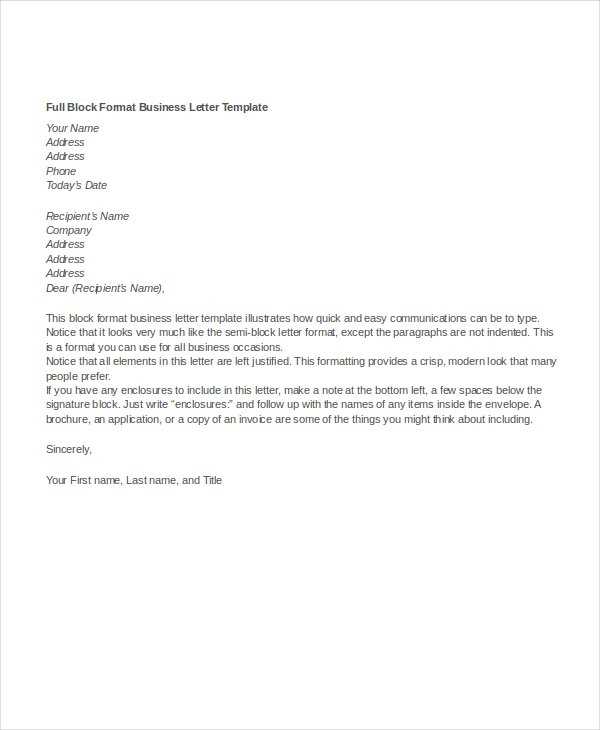
Even minor errors in how you structure a formal communication can affect its professionalism and clarity. Being aware of common pitfalls helps ensure your message is received with the intended impact. Avoiding these mistakes will enhance the overall quality and effectiveness of your communication.
Here are some common errors to watch out for:
- Inconsistent spacing: Inconsistent margins or line spacing can make your document appear chaotic and hard to follow.
- Using overly casual language: Informal or colloquial phrases can diminish the level of professionalism in your message.
- Not proofing your work: Failing to check for typos, grammatical mistakes, or awkward phrasing can negatively affect your credibility.
- Overcomplicating the layout: Using too many fonts or formatting styles can make the document look cluttered and unprofessional.
- Ignoring the recipient’s title: Addressing someone without using their appropriate title or salutation can come across as disrespectful.
- Overlooking the closing: Forgetting to include a formal sign-off or signature can make your message feel incomplete or impolite.
By being mindful of these mistakes, you can improve the clarity and professionalism of your communication, leaving a positive impression on the recipient.